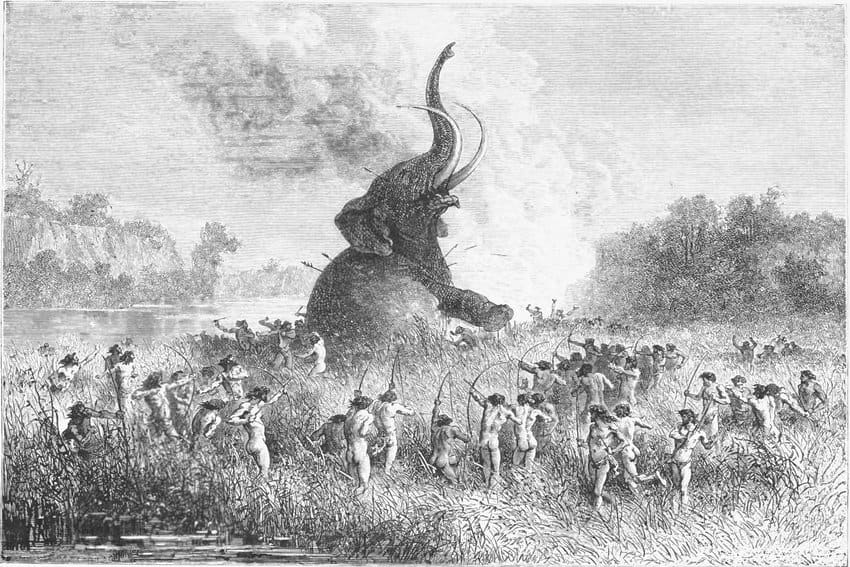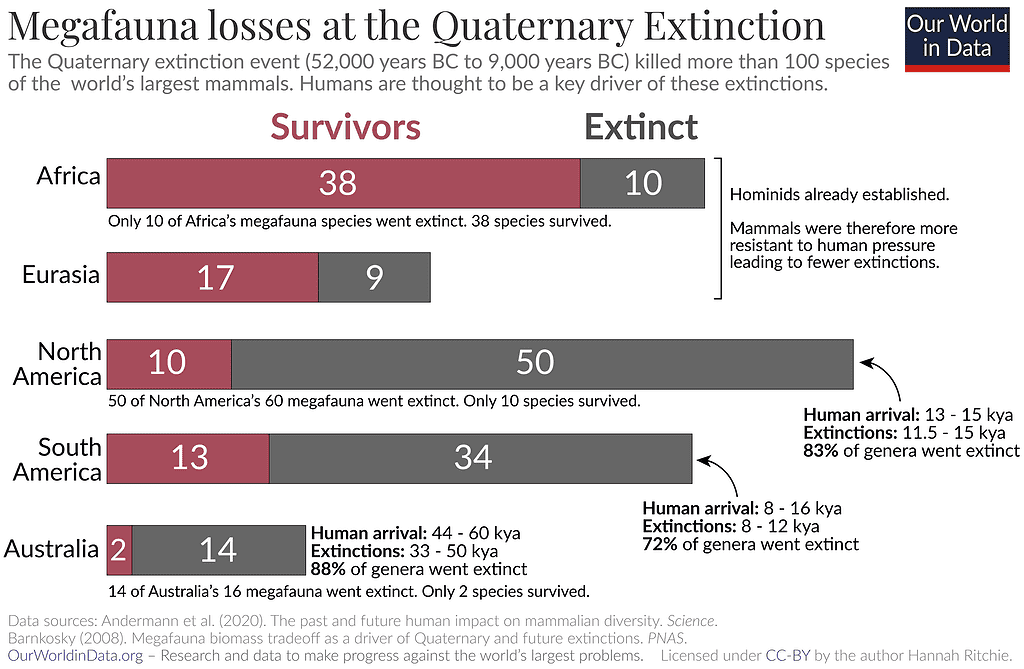For years, scientists have discussed whether humans or climate change caused the population of large mammals to decline over the past several thousand years. Now, a new study has confirmed that climate can’t be the explanation. Researchers studied the DNA of larger mammals and found the major decline was linked to the spread of humans.

The first modern humans migrated out of Africa about 100,000 years ago. They settled in virtually every kind of landscape, from deserts to jungles. Part of their success was due to humans’ ability to hunt large animals. They were able to kill even the most dangerous mammals, using clever hunting techniques and specialty-built weapons.
However, the success of our ancestors came at the expense of other large mammals. Many large species went extinct during the time of colonization by modern humans. Now, a study by Aarhus University based on the DNA of 139 living species of larger mammals showed that even those that survived experienced a significant decline.
“For the past 800,000 years, the globe has fluctuated between ice ages and interglacial periods about every 100,000 years. If climate was the cause, we should see greater fluctuations when the climate changed prior to 50,000 years ago. But we don’t. Humans are therefore the most likely explanation,” Jens-Christian Svenning, professor of ecology and study author, said in a news release.
Who killed the large mammals?
On one side, some scientists believe that rapid and severe changes in the climate are the main culprits behind the rapid declines or extinctions of large mammals. On the opposite side, there’s a group who believes that the prevalence of modern humans is the explanation — that we hunted many of them to extinction.
The most relevant evidence so far has been fossils from the past 50,000 years. They show that the strong, selective extinction of large animals in time and space matches the spread of modern humans around the globe. Therefore, the extinction of animals can’t really be put down to climate. Nevertheless, the debate continues today.

The new study presents data that sheds new light on the debate. By looking at the DNA of large living mammals, species that survived for the past 50,000 years without becoming extinct, the researchers showed that the populations of these animals have also declined over this period — a development that seems to be due to the spread of humans.
“DNA contains a lot of information about the past. Most people know the tree of life, which shows where the different species developed and what common ancestors they have. We’ve done the same with mutations in the DNA. By grouping the mutations and building a family tree, we can estimate the size of the population,” Juraj Bergman, study author, said in a news release.
The large mammals in the study are all species that exist today. They include elephants, bears, kangaroos and antelopes, among others. It’s estimated that there are 6,399 species of mammals on Earth, but the 139 chosen in the study were selected to test how their populations changed over the past 5,000 to 40,000 years, when similar large mammals went extinct.
The woolly mammoth
Most of the debate about what caused the large animals to become extinct or decline in numbers has so far centered around the woolly mammoth (Mammuthus primigenius), now an extinct species. However, the researchers believe this is a poor example, as the mammoth was associated with only one specific type of climate.
“The classic arguments for the climate as an explanatory model are based on the fact that the woolly mammoth and a number of other species associated with the so-called mammoth steppe disappeared when the ice melted and the habitat type disappeared,” Svenning said in a news statement. “This is basically an unsatisfactory explanatory model.”
Most of the extinct large mammals didn’t actually live on the mammoth steppe, Svenning said. They lived in warm regions, such as temperate and tropical forests or savannahs. “In our study, we also show a sharp decline during this period in populations of the many megafauna species that survived and come from all sorts of different regions and habitats,” he added.
While the debate may not be over, the researchers think it’s difficult to see how the arguments for the climate as the main explanation can continue. “It seems inconceivable that it is possible to come up with a climate model that explains how, across all continents and groups of large animals, there have been extinctions and continuous decline since about 50,000 years ago,” Svenning said.
The study was published in the journal Nature Communications.









